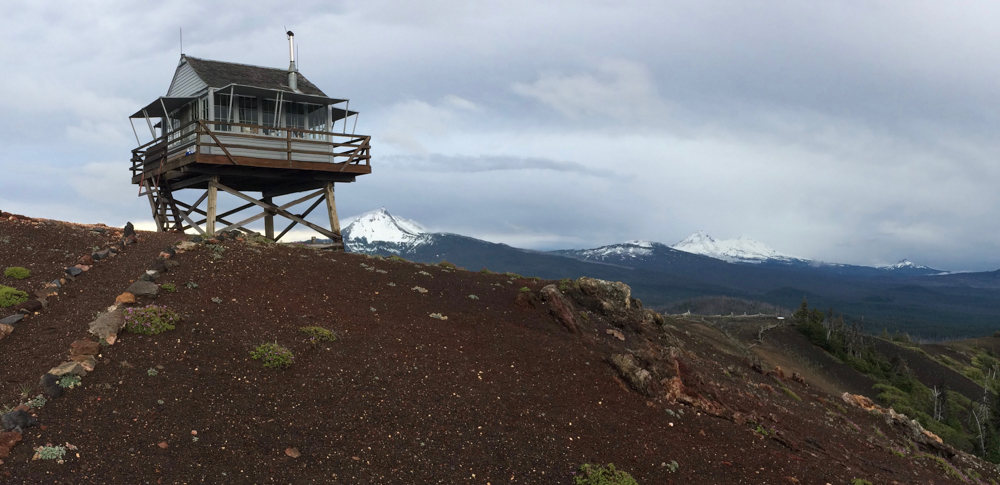Cortni Borgerson brings out a series of pictures of a rainforest half a world away from Portland State. She points to a photograph of a bright-yellow tent staked underneath a blue tarp, which rests in front of a backdrop of deep green and brown forestation. “That one was my home,” she said. The Portland State biological anthropology major recently spent five months in a remote part of Madagascar as a field assistant for PSU professor Natalie Vasey. During their stay in the rainforest, the two had little contact with the outside world, bathed beside waterfalls and ate rice, beans and plantains cooked over an open fire for nearly every meal of every day. The pair were in Madagascar to study how distributions of resources within the rainforest affect population density among the red ruffed lemur.
To Madagascar and back
Cortni Borgerson brings out a series of pictures of a rainforest half a world away from Portland State. She points to a photograph of a bright-yellow tent staked underneath a blue tarp, which rests in front of a backdrop of deep green and brown forestation.
“That one was my home,” she said.
The Portland State biological anthropology major recently spent five months in a remote part of Madagascar as a field assistant for PSU professor Natalie Vasey. During their stay in the rainforest, the two had little contact with the outside world, bathed beside waterfalls and ate rice, beans and plantains cooked over an open fire for nearly every meal of every day.
The pair were in Madagascar to study how distributions of resources within the rainforest affect population density among the red ruffed lemur.
“Some parts of the forest are much more densely populated than others,” Borgerson said, “and we want to find out why.”
During their research, some specific information came to light, but they are not yet ready to make the information public.
“It definitely appears there are some trends,” Borgerson said.
Borgerson, who completed her undergraduate work at Case Western University in Ohio, said she was drawn to Portland State because of Vasey’s work on primate research, which focuses primarily on species found in Madagascar.
“There are so few people in the U.S. that study lemurs,” Borgerson said. “We’re so lucky to have someone here who does that.”
The red ruffed lemur is on the World Conservation Union’s list of critically endangered species and lives only in the northeast corner of Madagascar, where Vasey and Borgerson were conducting their research. The lemurs are known for their vivid red coats, long black tails and white ruff markings. Borgerson said each animal’s white markings are typically unique, which made it easy to distinguish between different individuals in the lemur groups they studied.
Borgerson said the lemurs acclimated to the presence of the researchers in their midst very quickly, ignoring the humans entirely within a few weeks.
“If you were studying chimpanzees, it could take years to accomplish what we were able to [in five months], because lemurs habituate very quickly,” Borgerson said.
Getting to the northeast peninsula was not an easy task for the researchers, who traveled for nearly three weeks from Portland.
“The boat ride when we came in was the most petrifying,” said Borgerson, describing their journey from Madagascar’s capital city to their forest campsite. She said the water was turbulent, and at one point, Vasey had to hold Borgerson down to keep her from flying out of the vessel into the shark-infested waters.
Once they had landed, the trip did not get any easier.
“It’s known as one of the hardest places to work in Madagascar,” Borgerson said.
She described the rainforest as being extremely steep and wet, adding that in order to make the ascent at all, they had to use both hands and feet to haul themselves and their gear up to their camp.
“The vines there are so dense, you can’t walk two feet without being tangled in them,” Borgerson said, “so you had to cut your own path.”
Every day, the researchers would get up pre-dawn and hike through the rainforest to find a focal group of lemurs, before the animals had dispersed into the canopy for the day. Once they had a focal group, she said, they would find an individual lemur in the group and follow it for the duration of the day.
Borgerson said she had a few favorites, such as a one-eyed male lemur. She said for an arboreal animal, a biology term for an animal that spends most of its time in a tree or bush, to be missing an eye in an environment that required a lot of movement and jumping was highly unusual.
“He was also very kind,” she said. “He always stayed in the nicer parts of the forest,” which made the job of tailing him much easier.
Borgerson and Vasey returned to the States in December, and Borgerson is now compiling her research data into what will eventually become her master’s thesis. She is in her first term at Portland State, and works as Vasey’s paleoanthropology teacher’s assistant. She plans to continue aiding Vasey through next year as well.
Borgerson said she’s glad for hot showers and clean socks, but is anxious to get back to the island for further research. She said she will be returning as soon as possible, but added that sometimes it can take years to secure research grants.
The wait is worth it, she said.
“It’s the most beautiful place in the whole entire world.”




